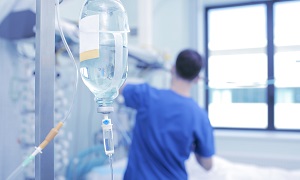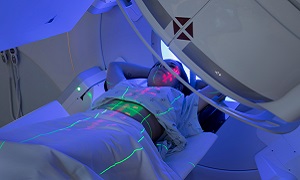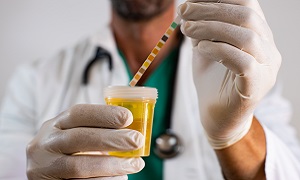Non-Hodgkin's Lymphoma
Non-Hodgkin’s Lymphoma is cancer originating from the lymphatic system of the human body. The lymphatic system fights the infections and spreads across our entire body. In this disease, the tumors develop from a type of white blood cells called lymphocytes. It is one of the two general types of lymphoma and is more common than Hodgkin’s Lymphoma. A type of abnormal cells called Reed-Sternberg cells help to differentiate between the two types of Lymphoma. These cells are only present in Hodgkin’s Lymphoma while they are absent in Non-Hodgkin’s Lymphoma. The treatment of the disease varies from Hodgkin’s Lymphoma.
Types of Non-Hodgkin's Lymphoma
There are various types of Non-Hodgkin’s Lymphoma. They are:
- B-cell Lymphoma – Reports suggest that around 85% of cases of Non-Hodgkin’s Lymphoma are that of B-cell Lymphoma. Diffuse, large B-cell Lymphoma is the most common type of B-cell Lymphoma. Other types of B-cell Lymphoma are Burkitt’s Lymphoma, lymphoplasmacytic mantle cell lymphoma, marginal zone B-cell lymphoma, extranodal marginal zone B-cell lymphoma, small lymphocytic lymphoma, mediastinal large B-cell lymphoma.
- T-cell Lymphoma – It affects around 15% of the population. It is of two types that comprise T-cells. They are peripheral T-cell lymphoma and cutaneous T-cell lymphoma.
- Follicular Lymphoma – It is a rare type of B-cell Lymphoma.
Causes of Non-Hodgkin's Lymphoma
While some doctors are unaware of the causes of Non-Hodgkin’s Lymphoma, some reports suggest that the weakened immune system causes this cancer. The body produces many abnormal lymphocytes (a type of white blood cell) that cause cancer. The lymphocytes do not undergo the normal cycle in the patient suffering from Non-Hodgkin’s Lymphoma. The lymphocytes, instead of dying, grow and multiply in Non-Hodgkin’s Lymphoma. These abnormal lymphocytes crowd the lymph nodes of the patient, and this causes the lymph nodes to swell.
- B-cells: Non-Hodgkin’s Lymphoma can begin in the B-cells. B-cells produce antibodies to fight germs and infections. These antibodies act against foreign bodies to protect the body. In most cases, cancer arises from B-cells.
- T-cells: T-cells kill the foreign bodies instantly and inhibit them from invading. Only a few cases of Non-Hodgkin’s Lymphoma occur in T-cells.
Symptoms of Non-Hodgkin's Lymphoma
One may find some symptoms that associate with Non-Hodgkin’s Lymphoma. These symptoms are:
- Persistent fatigue
- Unexplained weight loss
- Swollen lymph nodes present in the neck, armpit, and groin region
- Fever
- Chest pain
- Night sweats
- Abdominal pain
- Breathlessness and coughing
- Abdominal swelling
Diagnosis of Non-Hodgkin's Lymphoma
Although your symptoms indicate the presence of abnormal lymphocytes in your body, your doctor might need to perform some tests to form an accurate diagnosis and confirm the disease. Your doctor will ask about the medical history of your family & you and may also take down your personal history. Some tests and procedures follow the history-taking to diagnose Non-Hodgkin’s Lymphoma.
Physical inspection
Urine tests and blood tests
Imaging scans

Bone marrow tests
Testing of the lymph nodes

Treatment options for Non-Hodgkin's Lymphoma
Chemotherapy

Radiotherapy




